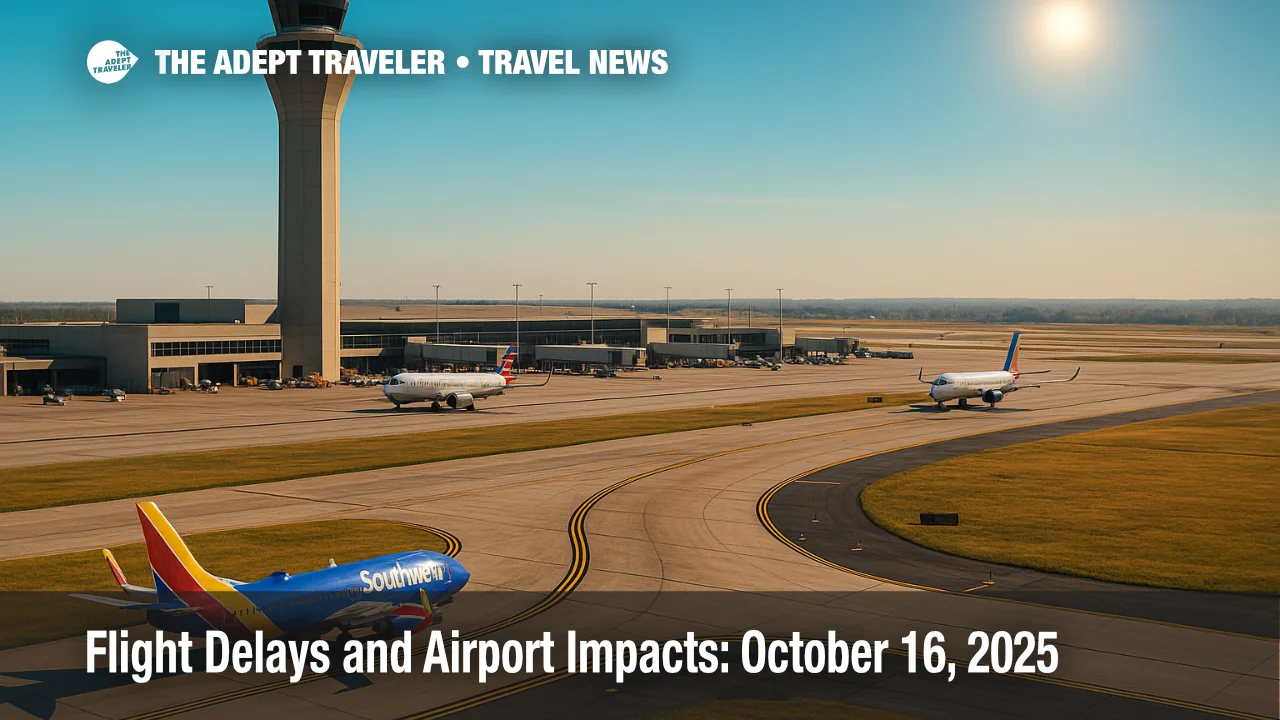Flight delays and airport impacts: October 16, 2025

Key points
- ATC staffing continues to pressure peak banks at major hubs.
- Austin saw a recent ground stop, ripple delays remain possible.
- New York airports operate under extended slot waivers through summer 2026.
- Watch TFRs and potential launch activity for short-notice flow changes.
Ongoing air traffic control staffing constraints and scattered weather could slow peak departure and arrival banks today, particularly at Austin-Bergstrom International Airport (AUS), Phoenix Sky Harbor International Airport (PHX), Chicago O'Hare International Airport (ORD), and the New York airports. The FAA's National Airspace System status shows routine program use with potential for flow initiatives at congested facilities, while recent advisories note episodic constraints tied to staffing and launch operations. Travelers should pad schedules, watch for rolling ground delay programs, and keep an eye on airline-issued waivers. Expect conditions to evolve by bank and by region as the day progresses.
FAA system constraints and weather drivers
The FAA's live NAS dashboard indicates standard traffic management with facility notes updated this morning, and the ATCSCC advisory feed reflects active planning windows. While no national ground stop is posted at press time, the system remains sensitive to staffing and minor weather, which can trigger ground delay programs at short notice. In New York, extended slot flexibility at John F. Kennedy, LaGuardia, and Newark continues to ease scheduling pressure but does not eliminate delays during peak pushes.
Latest developments
- Austin ripple effects. A recent FAA-confirmed ground stop at Austin on October 14 underscores local staffing sensitivity; residual schedule adjustments remain possible around peak banks.
- National staffing backdrop. Airlines and the FAA have warned of intermittent delays tied to controller staffing during the ongoing federal funding lapse, with impacts varying by facility and time of day.
- Airspace notices. Temporary flight restrictions and launch operations periodically alter flows along the East and West Coasts; ATCSCC planning messages continue to flag these windows.
Analysis
Today's picture is a familiar one for fall shoulder season. With controller staffing thin in key facilities, small weather or volume spikes can cascade into longer taxi-out times and arrival metering. If you are connecting through New York, Chicago, Phoenix, or Austin, move to earlier flights with longer layovers and avoid last-bank arrivals. AUS and PHX are particularly vulnerable to crew and gate imbalances when programs are issued late in the bank. For the Northeast, slot flexibility helps, but arrival saturation can still create GDPs at LaGuardia and Newark. Finally, watch for short-notice TFRs or launch activity that can prompt flow reroutes, especially for Florida corridors and transcons.
Final thoughts
Plan for moderate delays, build buffer time at connections, and keep airline apps open for rolling updates on October 16, 2025. These small steps reduce stress when the primary driver is staffing rather than widespread storms.
